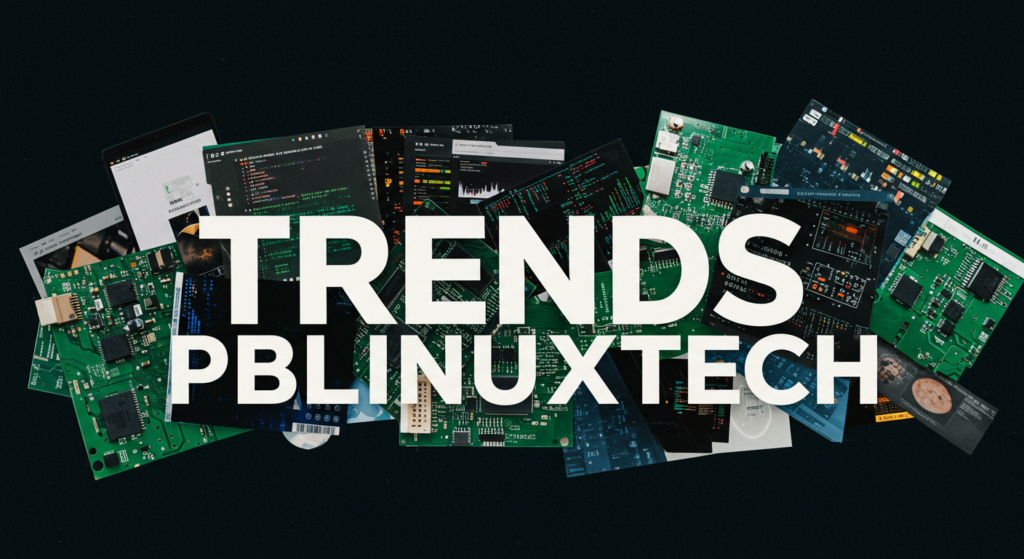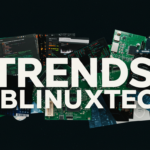Introduction
In today’s rapidly evolving digital world, Trends PBLinuxTech has emerged as a pivotal topic among tech enthusiasts, developers, and IT professionals. Linux-based systems have long been the backbone of enterprise computing, cybersecurity frameworks, and cloud infrastructure. Now, as technology advances toward AI integration, containerization, and edge computing, Linux and its surrounding technologies continue to shape the foundation of modern innovation. PBLinuxTech, a rising player in the open-source landscape, reflects a broader transformation that’s reshaping how organizations build, manage, and scale digital solutions.
Understanding these trends isn’t just for developers or system administrators anymore—it’s crucial for anyone invested in the future of technology. From cloud-native applications to cybersecurity automation, Trends PBLinuxTech offers insights into how Linux technology adapts to industry needs while maintaining its open-source ethos. In 2025, businesses are prioritizing scalability, interoperability, and sustainability—all areas where Linux-based systems excel. The following sections will explore these key trends, examining how they influence innovation, boost productivity, and secure the digital ecosystem.
The Rise of Cloud-Native Linux Platforms
Cloud computing has become the dominant force in digital infrastructure, and Trends PBLinuxTech highlights how Linux continues to lead this evolution. Cloud-native platforms built on Linux distributions such as Ubuntu, Fedora, and Red Hat Enterprise Linux provide unmatched flexibility and reliability. As more organizations migrate workloads to hybrid and multi-cloud environments, Linux serves as the universal operating layer that ensures seamless integration and performance across systems. Its open-source nature empowers developers to customize and optimize environments based on unique operational requirements.
Moreover, the adoption of container technologies like Docker and Kubernetes—both born from Linux ecosystems—illustrates how Linux drives scalability and automation. According to CNCF (Cloud Native Computing Foundation), over 96% of container workloads now run on Linux-based systems. This integration enables faster deployment, better resource management, and reduced operational costs. PBLinuxTech trends in this area suggest continued growth in edge deployments, where lightweight Linux distributions enable data processing closer to the source, enhancing real-time analytics and application responsiveness.
Cybersecurity Reinvented Through Open-Source Defense
Cybersecurity is another domain heavily influenced by Trends PBLinuxTech, especially as threats grow more sophisticated. Open-source security tools and Linux-based frameworks empower organizations to build transparent, adaptable defenses. With the rise of ransomware, data breaches, and state-sponsored cyberattacks, Linux systems’ permission-based architecture and community-driven updates provide significant advantages. This approach enables rapid patch deployment and collective vulnerability assessments, enhancing resilience against evolving cyber risks.
Additionally, the focus on zero-trust architectures aligns closely with Linux’s modular design. Security tools like SELinux, AppArmor, and auditd remain central to proactive threat detection and access control. Recent PBLinuxTech innovations also emphasize automated security auditing using machine learning to detect anomalies. Such integrations are transforming Linux from merely a secure platform into an intelligent defense ecosystem. As enterprises face mounting compliance regulations, open-source transparency continues to offer the credibility and accountability that proprietary systems often lack.
Edge Computing and the Lightweight Linux Revolution
One of the most exciting Trends PBLinuxTech is the rise of edge computing powered by lightweight Linux distributions. In industries like IoT, manufacturing, and telecommunications, processing data locally reduces latency and dependence on central cloud servers. Linux-based operating systems such as Alpine and Tiny Core are enabling compact, efficient edge devices to perform complex computations at incredible speeds. This shift aligns with the global demand for faster, more responsive digital experiences.
The adoption of these lightweight Linux systems also promotes energy efficiency—a critical concern as companies pursue greener tech initiatives. Edge computing on Linux not only lowers energy consumption but also enhances reliability in remote or bandwidth-limited environments. Recent developments in PBLinuxTech frameworks demonstrate how microservices architectures and container orchestration at the edge can support autonomous vehicles, smart grids, and connected healthcare devices. This convergence between Linux efficiency and edge capability continues to redefine real-time data management and performance optimization.
Automation and DevOps Transformation
In the modern IT landscape, automation is no longer optional—it’s essential. Trends PBLinuxTech reflects how Linux and open-source tools are driving DevOps automation across industries. Platforms like Ansible, Puppet, and Terraform—all rooted in Linux ecosystems—are revolutionizing how teams deploy, manage, and scale infrastructure. These tools enable continuous integration and delivery (CI/CD), reducing human error and accelerating product cycles.
Beyond automation, PBLinuxTech trends show that AI-assisted DevOps is emerging as a game-changer. Predictive analytics and self-healing systems powered by Linux allow organizations to anticipate infrastructure issues before they cause downtime. Companies adopting Linux-based DevOps pipelines report up to 40% faster deployments and significantly improved reliability. As businesses embrace agile methodologies, Linux’s command-line versatility and scripting capabilities continue to make it the preferred environment for developers and IT engineers alike.
AI and Machine Learning Integration
Another defining aspect of Trends PBLinuxTech in 2025 is the seamless integration of AI and machine learning into Linux-based systems. Linux provides the open, flexible environment necessary for training models, deploying frameworks, and handling vast datasets. Tools like TensorFlow, PyTorch, and Scikit-learn run natively and efficiently on Linux servers, giving developers the power to innovate rapidly without licensing restrictions.
Additionally, AI-driven optimization in Linux systems helps enhance performance and resource allocation. Modern Linux kernels can dynamically adjust workloads based on predictive analytics, minimizing bottlenecks and maximizing efficiency. PBLinuxTech initiatives are also focusing on democratizing AI development by offering pre-configured Linux environments for researchers and startups. As the demand for AI applications grows across sectors—from healthcare to finance—Linux remains the foundation enabling scalable and ethical innovation.
The Expanding Role of Linux in Enterprise Infrastructure
Enterprises continue to recognize Linux as a strategic asset, and Trends PBLinuxTech underscores its expanding role in business-critical systems. From web hosting to database management and virtualization, Linux dominates enterprise infrastructure due to its performance, cost-effectiveness, and robust community support. In fact, over 90% of cloud servers and 70% of enterprise workloads now operate on Linux-based systems.
Furthermore, the integration of Linux with enterprise automation tools and hybrid-cloud architectures is streamlining digital transformation efforts. PBLinuxTech adoption among corporations also highlights an increased focus on long-term sustainability and cybersecurity compliance. As industries migrate from legacy systems, Linux provides a stable, adaptable foundation that evolves alongside emerging technologies like quantum computing and blockchain. This adaptability ensures that enterprises leveraging Linux remain competitive and future-ready.
Sustainability and Green Computing Initiatives
Sustainability has become an integral part of the Trends PBLinuxTech conversation. As data centers consume massive amounts of power, organizations are turning to Linux for greener, more energy-efficient operations. Linux’s lightweight kernels and customizable architectures minimize hardware demands, extending the lifespan of existing systems and reducing e-waste. The open-source community continues to innovate in optimizing CPU utilization, cooling management, and low-power kernel modes.
Green computing initiatives under the PBLinuxTech framework also emphasize collaborative development for climate-conscious technology. Companies are increasingly adopting Linux-based virtualization and container technologies to consolidate workloads efficiently. This not only cuts costs but also aligns with global carbon neutrality goals. As governments and corporations commit to sustainability metrics, Linux’s modular and efficient design provides the foundation for environmentally responsible digital infrastructure.
Conclusion
The evolution of Trends PBLinuxTech reflects the unstoppable momentum of Linux and open-source innovation in shaping the digital future. From cloud-native computing and AI integration to cybersecurity and sustainability, PBLinuxTech embodies the adaptability and collaboration that define modern technology. As industries accelerate toward automation and decentralization, Linux stands as both a reliable foundation and a driving force for innovation.
For businesses, developers, and tech enthusiasts alike, understanding and embracing these trends is not just beneficial—it’s essential. The world is moving toward smarter, more secure, and sustainable systems, and Linux continues to lead that charge. By staying aligned with Trends PBLinuxTech, organizations can unlock new efficiencies, strengthen their digital resilience, and play an active role in building a more open and intelligent technological future.
Read More: GoCryptoBet.com Betting






